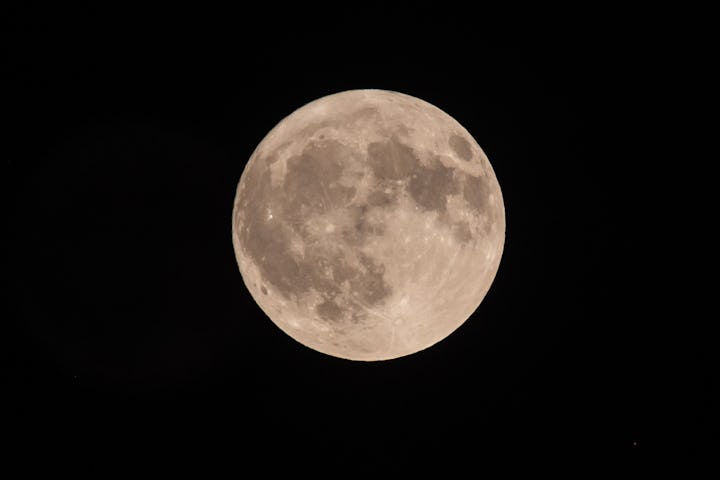July's Full Moon Tees Up 4 Spectacular Supermoons In A Row
If you and the kids are fascinated by moon phases, or you’re looking for something to do together, here’s what you need to know.

July’s full moon — also known as the Buck Moon — kicks off an incredible string of full moons. Why is that? July’s full Buck moon isn’t just a regular old full moon. It’s a supermoon. And it’s not the only supermoon of the year. It actually kicks off four consecutive incredible supermoons in a row — and it’s going to be magical. But what is a supermoon? And what does it mean that we get three more after this?
What is a supermoon?
According to EarthSky, a supermoon happens when the full moon is closest to Earth in its elliptical orbit. The definition of a supermoon comes from astronomer Fred Espenak, who says a supermoon happens when a full moon occurs “within 90% of its closest approach to Earth in a given orbit.”
“The distance to the moon from Earth’s center changes from 406,000 km at apogee to about 357,000 km at perigee,” or the nearest point, Forbes explains. “As a consequence, at perigee, the moon appears a little larger in the sky than the average apparent size.”
Basically, the moon is much closer to us than usual — and it makes it look way, way bigger in our sky.
Why is a supermoon more exciting than a typical full moon?
That’s what makes supermoons so exciting to see (and where the name comes from) because they look a lot brighter and bigger than a typical full moon.
“A supermoon exceeds the disk size of an average-sized moon by up to 8% and the brightness of an average-sized full moon by some 16%,” EarthSky notes. Sometimes, that change is imperceptible — but sometimes, it’s not.
This summer, we will be treated to four supermoons in a row, kicking off with July’s Super Buck Moon and ending with September’s Super Harvest Moon.
When to see July’s Super Buck Moon
July’s full Super Buck Moon rises on July 3, 2023, and reaches peak illumination quickly thereafter, at 7:39 A.M. EST. If you want to watch its first rise, “look towards the southeast after sunset to watch it rise in the sky,” the Farmers’ Almanac says.
Full moons are always easier to see than, say, elusive meteor showers. You don’t need to wait for your eyes to adjust to the dark when it comes to seeing a supermoon, and you don’t need to drive away from pesky light pollution for a better look. Just look up and see the beautiful, super bright, supermoon in the sky.
Why is July’s full moon called the Buck Moon?
July’s full moon goes by many names — it’s called the Buck Moon because “the antlers of male deer (bucks) are in full-growth mode at this time,” per the Farmers’ Almanac.
But the moon has other names like the Feather Moulting Moon, the Salmon Moon, the Thunder Moon, and more.
What supermoons come next?
August has two full supermoons — the Super Sturgeon Moon and the Super Blue moon — at the beginning and end of the month, respectively, and the Super Blue moon will be the closest full supermoon of the year. Then, in September, there’s the Super Harvest moon.
And don’t go too far — 2024 will be another banner year for supermoons, where we’ll get four more Supermoons in a row starting in August 2024.